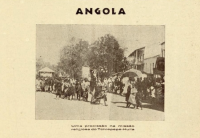 References to Portugal’s epic, seafaring past like these litter this city – there is even a Vasco da Gama shopping mall. But until now, there has never been a single explicit reference, memorial or monument in Portugal’s public space to its pioneering role in the transatlantic slave trade, nor any acknowledgement of the millions of lives that were stolen between the 15th and 19th centuries.
References to Portugal’s epic, seafaring past like these litter this city – there is even a Vasco da Gama shopping mall. But until now, there has never been a single explicit reference, memorial or monument in Portugal’s public space to its pioneering role in the transatlantic slave trade, nor any acknowledgement of the millions of lives that were stolen between the 15th and 19th centuries.
Games Without Borders
15.03.2021 | by Ana Naomi de Sousa
 Despite the importance of chattel slavery to the making of Portugal and its overseas empire, this terrifying history of black bondage is entirely muted in the public memory of Lisbon. In contrast to the (recently established and far overdue) National Museum of African American History and Culture in the United States or the Museu Afro Brasilin São Paulo, Brazil, there are no such museums or reckoning public memorials in Lisbon along the lines of the Mémorial de l’Abolition d’Esclavage as in Nantes, France. More recently, however, a slavery museum was established in the historic “Mercado de Escravos” (Slave Market) of the southern Portuguese port of Lagos, which is said to be the site of the first trade in enslaved Africans in Europe. Yet, Lisbon remains largely silent on its legacy of white terror and black captivity.
Despite the importance of chattel slavery to the making of Portugal and its overseas empire, this terrifying history of black bondage is entirely muted in the public memory of Lisbon. In contrast to the (recently established and far overdue) National Museum of African American History and Culture in the United States or the Museu Afro Brasilin São Paulo, Brazil, there are no such museums or reckoning public memorials in Lisbon along the lines of the Mémorial de l’Abolition d’Esclavage as in Nantes, France. More recently, however, a slavery museum was established in the historic “Mercado de Escravos” (Slave Market) of the southern Portuguese port of Lagos, which is said to be the site of the first trade in enslaved Africans in Europe. Yet, Lisbon remains largely silent on its legacy of white terror and black captivity.
City
04.02.2021 | by Yesenia Barragan
 For Romero, this is one of the points of art: to help us face up to our own part in slavery and its legacy, and a powerful way to reveal, and explore, our past. “With this story, we wanted to tell the British angle – this is British history,” says Romero of The Whip. “We’re in constant dialogue with our past: we have to be.”
For Romero, this is one of the points of art: to help us face up to our own part in slavery and its legacy, and a powerful way to reveal, and explore, our past. “With this story, we wanted to tell the British angle – this is British history,” says Romero of The Whip. “We’re in constant dialogue with our past: we have to be.”
Afroscreen
22.10.2020 | by Holly Williams
 The cumulative individual tragedies on slave trails to the coast, in the barracoons, and on the beaches: no one can even count. So the four centuries of African enslavement by Europeans remains an abstract story. The need to make it real, to find things that you can see, touch and feel is what most motivated me to participate in the ambitious documentary series Enslaved with Samuel L Jackson, to be broadcast on the BBC starting on Sunday. It’s an attempt to get away from the numbers and statistics and instead focus on the real people who endured this era – their flesh and bone, dreams and legacies.
The cumulative individual tragedies on slave trails to the coast, in the barracoons, and on the beaches: no one can even count. So the four centuries of African enslavement by Europeans remains an abstract story. The need to make it real, to find things that you can see, touch and feel is what most motivated me to participate in the ambitious documentary series Enslaved with Samuel L Jackson, to be broadcast on the BBC starting on Sunday. It’s an attempt to get away from the numbers and statistics and instead focus on the real people who endured this era – their flesh and bone, dreams and legacies.
To read
16.10.2020 | by Afua Hirsch
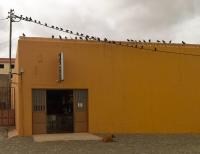 They are stories from which the narrator takes on the ambiguities of the discourses of negritude and whiteness, racism and antiracism, the plasticity of discrimination, the trap of stereotype, and the awareness of prejudice. These are stories that point us to a common past made up of very different memories.
They are stories from which the narrator takes on the ambiguities of the discourses of negritude and whiteness, racism and antiracism, the plasticity of discrimination, the trap of stereotype, and the awareness of prejudice. These are stories that point us to a common past made up of very different memories.
To read
02.10.2018 | by Margarida Calafate Ribeiro
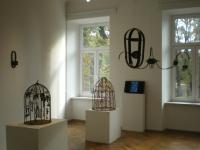 For centuries enslaved Africans were taken to Europe and America to serve as workforce. These individuals were forced into submission and considered sub-human. They were brutalized and treated worse than animals by other individuals, and their institutions, which thought of themselves as civilized and modern. These enslaved men and women suffered and despaired, and dreamt of a life before, and of a land more familiar and kind. So, out of the insanity of misery and helplessness, they would eat the soil in the hope of being taken back to that time and land of before.
For centuries enslaved Africans were taken to Europe and America to serve as workforce. These individuals were forced into submission and considered sub-human. They were brutalized and treated worse than animals by other individuals, and their institutions, which thought of themselves as civilized and modern. These enslaved men and women suffered and despaired, and dreamt of a life before, and of a land more familiar and kind. So, out of the insanity of misery and helplessness, they would eat the soil in the hope of being taken back to that time and land of before.
I'll visit
10.11.2016 | by Ana Rita Canhão
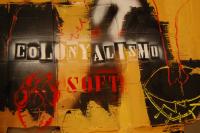 he ROOTS project approaches the slavery theme through/from a contemporary vision inspired by an archeological discovery in 2008 in the “green circle” in Lagos at the location which was known as the “Vale da Gafaria” (Valley of the Leper Hospital). In the area rescue archeological excavations that preceded the construction of one of the city’s underground car parks enabled the methodological investigation of the whole area affected by the enterprise - one of the ex-libris of urban regeneration that the municipal administration was able to carry out in the decade of the XXI Century.
he ROOTS project approaches the slavery theme through/from a contemporary vision inspired by an archeological discovery in 2008 in the “green circle” in Lagos at the location which was known as the “Vale da Gafaria” (Valley of the Leper Hospital). In the area rescue archeological excavations that preceded the construction of one of the city’s underground car parks enabled the methodological investigation of the whole area affected by the enterprise - one of the ex-libris of urban regeneration that the municipal administration was able to carry out in the decade of the XXI Century.
I'll visit
15.02.2012 | by Rui Parreira
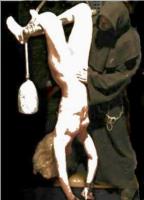 Witchcraft, as used here, is also an abstraction, but one intended to represent directly the terms used by African and other societies to describe their own beliefs and practices. The introductory section of the essay will attempt to identify an African witchcraft idiom which gives broader meaning to texts such as the Beninois oral account of slave-cowry transactions. The concluding section will examine the early-modern European "witch craze" in order to consider how the elaboration of common elements in European and African culture both reflects and mediates differing trajectories into the modern world
Witchcraft, as used here, is also an abstraction, but one intended to represent directly the terms used by African and other societies to describe their own beliefs and practices. The introductory section of the essay will attempt to identify an African witchcraft idiom which gives broader meaning to texts such as the Beninois oral account of slave-cowry transactions. The concluding section will examine the early-modern European "witch craze" in order to consider how the elaboration of common elements in European and African culture both reflects and mediates differing trajectories into the modern world
To read
19.06.2011 | by Ralph A. Austen
 When the Africans discovered that the mato inspired such horror in the Portuguese, they made it their habitual refuge, patiently negotiating from there with the intruders. Queen Njinga, in Angola, played this game to perfection, thus provoking the increasing anger of the Portuguese. Referring to the subterfuges the Portuguese governor opposed to the liberation of her sister, prisoner in Luanda, she wrote on 13 December 1655: “For these and other betrayals I took shelter in the matos, far from my territories” (Cadornega 1972, II: 501). By withdrawing to the forest, the queen was not only obeying a military imperative, but also putting pressure on the Portuguese.
When the Africans discovered that the mato inspired such horror in the Portuguese, they made it their habitual refuge, patiently negotiating from there with the intruders. Queen Njinga, in Angola, played this game to perfection, thus provoking the increasing anger of the Portuguese. Referring to the subterfuges the Portuguese governor opposed to the liberation of her sister, prisoner in Luanda, she wrote on 13 December 1655: “For these and other betrayals I took shelter in the matos, far from my territories” (Cadornega 1972, II: 501). By withdrawing to the forest, the queen was not only obeying a military imperative, but also putting pressure on the Portuguese.
To read
17.05.2011 | by Martín Lienhard
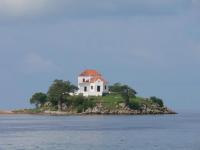 The triangular trade relationship liking Africa and Europe is well known. The “dark continent” supplied the slave labour that America needed, and indeed contributed to its growth, expansion and development. Slave labour also fed into European commercial interests, also generating economic, social, technological, cultural and other development. It is an issue which had repercussions in the relationship between the three continents and its consequences are still the subject of debate, as demographic studies illustrate.
The triangular trade relationship liking Africa and Europe is well known. The “dark continent” supplied the slave labour that America needed, and indeed contributed to its growth, expansion and development. Slave labour also fed into European commercial interests, also generating economic, social, technological, cultural and other development. It is an issue which had repercussions in the relationship between the three continents and its consequences are still the subject of debate, as demographic studies illustrate.
To read
29.11.2010 | by Aurora da Fonseca Ferreira
 References to Portugal’s epic, seafaring past like these litter this city – there is even a Vasco da Gama shopping mall. But until now, there has never been a single explicit reference, memorial or monument in Portugal’s public space to its pioneering role in the transatlantic slave trade, nor any acknowledgement of the millions of lives that were stolen between the 15th and 19th centuries.
References to Portugal’s epic, seafaring past like these litter this city – there is even a Vasco da Gama shopping mall. But until now, there has never been a single explicit reference, memorial or monument in Portugal’s public space to its pioneering role in the transatlantic slave trade, nor any acknowledgement of the millions of lives that were stolen between the 15th and 19th centuries.  Despite the importance of chattel slavery to the making of Portugal and its overseas empire, this terrifying history of black bondage is entirely muted in the public memory of Lisbon. In contrast to the (recently established and far overdue) National Museum of African American History and Culture in the United States or the Museu Afro Brasilin São Paulo, Brazil, there are no such museums or reckoning public memorials in Lisbon along the lines of the Mémorial de l’Abolition d’Esclavage as in Nantes, France. More recently, however, a slavery museum was established in the historic “Mercado de Escravos” (Slave Market) of the southern Portuguese port of Lagos, which is said to be the site of the first trade in enslaved Africans in Europe. Yet, Lisbon remains largely silent on its legacy of white terror and black captivity.
Despite the importance of chattel slavery to the making of Portugal and its overseas empire, this terrifying history of black bondage is entirely muted in the public memory of Lisbon. In contrast to the (recently established and far overdue) National Museum of African American History and Culture in the United States or the Museu Afro Brasilin São Paulo, Brazil, there are no such museums or reckoning public memorials in Lisbon along the lines of the Mémorial de l’Abolition d’Esclavage as in Nantes, France. More recently, however, a slavery museum was established in the historic “Mercado de Escravos” (Slave Market) of the southern Portuguese port of Lagos, which is said to be the site of the first trade in enslaved Africans in Europe. Yet, Lisbon remains largely silent on its legacy of white terror and black captivity.  For Romero, this is one of the points of art: to help us face up to our own part in slavery and its legacy, and a powerful way to reveal, and explore, our past. “With this story, we wanted to tell the British angle – this is British history,” says Romero of The Whip. “We’re in constant dialogue with our past: we have to be.”
For Romero, this is one of the points of art: to help us face up to our own part in slavery and its legacy, and a powerful way to reveal, and explore, our past. “With this story, we wanted to tell the British angle – this is British history,” says Romero of The Whip. “We’re in constant dialogue with our past: we have to be.”  The cumulative individual tragedies on slave trails to the coast, in the barracoons, and on the beaches: no one can even count. So the four centuries of African enslavement by Europeans remains an abstract story. The need to make it real, to find things that you can see, touch and feel is what most motivated me to participate in the ambitious documentary series Enslaved with Samuel L Jackson, to be broadcast on the BBC starting on Sunday. It’s an attempt to get away from the numbers and statistics and instead focus on the real people who endured this era – their flesh and bone, dreams and legacies.
The cumulative individual tragedies on slave trails to the coast, in the barracoons, and on the beaches: no one can even count. So the four centuries of African enslavement by Europeans remains an abstract story. The need to make it real, to find things that you can see, touch and feel is what most motivated me to participate in the ambitious documentary series Enslaved with Samuel L Jackson, to be broadcast on the BBC starting on Sunday. It’s an attempt to get away from the numbers and statistics and instead focus on the real people who endured this era – their flesh and bone, dreams and legacies.  They are stories from which the narrator takes on the ambiguities of the discourses of negritude and whiteness, racism and antiracism, the plasticity of discrimination, the trap of stereotype, and the awareness of prejudice. These are stories that point us to a common past made up of very different memories.
They are stories from which the narrator takes on the ambiguities of the discourses of negritude and whiteness, racism and antiracism, the plasticity of discrimination, the trap of stereotype, and the awareness of prejudice. These are stories that point us to a common past made up of very different memories.  For centuries enslaved Africans were taken to Europe and America to serve as workforce. These individuals were forced into submission and considered sub-human. They were brutalized and treated worse than animals by other individuals, and their institutions, which thought of themselves as civilized and modern. These enslaved men and women suffered and despaired, and dreamt of a life before, and of a land more familiar and kind. So, out of the insanity of misery and helplessness, they would eat the soil in the hope of being taken back to that time and land of before.
For centuries enslaved Africans were taken to Europe and America to serve as workforce. These individuals were forced into submission and considered sub-human. They were brutalized and treated worse than animals by other individuals, and their institutions, which thought of themselves as civilized and modern. These enslaved men and women suffered and despaired, and dreamt of a life before, and of a land more familiar and kind. So, out of the insanity of misery and helplessness, they would eat the soil in the hope of being taken back to that time and land of before.  he ROOTS project approaches the slavery theme through/from a contemporary vision inspired by an archeological discovery in 2008 in the “green circle” in Lagos at the location which was known as the “Vale da Gafaria” (Valley of the Leper Hospital). In the area rescue archeological excavations that preceded the construction of one of the city’s underground car parks enabled the methodological investigation of the whole area affected by the enterprise - one of the ex-libris of urban regeneration that the municipal administration was able to carry out in the decade of the XXI Century.
he ROOTS project approaches the slavery theme through/from a contemporary vision inspired by an archeological discovery in 2008 in the “green circle” in Lagos at the location which was known as the “Vale da Gafaria” (Valley of the Leper Hospital). In the area rescue archeological excavations that preceded the construction of one of the city’s underground car parks enabled the methodological investigation of the whole area affected by the enterprise - one of the ex-libris of urban regeneration that the municipal administration was able to carry out in the decade of the XXI Century.  Witchcraft, as used here, is also an abstraction, but one intended to represent directly the terms used by African and other societies to describe their own beliefs and practices. The introductory section of the essay will attempt to identify an African witchcraft idiom which gives broader meaning to texts such as the Beninois oral account of slave-cowry transactions. The concluding section will examine the early-modern European "witch craze" in order to consider how the elaboration of common elements in European and African culture both reflects and mediates differing trajectories into the modern world
Witchcraft, as used here, is also an abstraction, but one intended to represent directly the terms used by African and other societies to describe their own beliefs and practices. The introductory section of the essay will attempt to identify an African witchcraft idiom which gives broader meaning to texts such as the Beninois oral account of slave-cowry transactions. The concluding section will examine the early-modern European "witch craze" in order to consider how the elaboration of common elements in European and African culture both reflects and mediates differing trajectories into the modern world  When the Africans discovered that the mato inspired such horror in the Portuguese, they made it their habitual refuge, patiently negotiating from there with the intruders. Queen Njinga, in Angola, played this game to perfection, thus provoking the increasing anger of the Portuguese. Referring to the subterfuges the Portuguese governor opposed to the liberation of her sister, prisoner in Luanda, she wrote on 13 December 1655: “For these and other betrayals I took shelter in the matos, far from my territories” (Cadornega 1972, II: 501). By withdrawing to the forest, the queen was not only obeying a military imperative, but also putting pressure on the Portuguese.
When the Africans discovered that the mato inspired such horror in the Portuguese, they made it their habitual refuge, patiently negotiating from there with the intruders. Queen Njinga, in Angola, played this game to perfection, thus provoking the increasing anger of the Portuguese. Referring to the subterfuges the Portuguese governor opposed to the liberation of her sister, prisoner in Luanda, she wrote on 13 December 1655: “For these and other betrayals I took shelter in the matos, far from my territories” (Cadornega 1972, II: 501). By withdrawing to the forest, the queen was not only obeying a military imperative, but also putting pressure on the Portuguese.  The triangular trade relationship liking Africa and Europe is well known. The “dark continent” supplied the slave labour that America needed, and indeed contributed to its growth, expansion and development. Slave labour also fed into European commercial interests, also generating economic, social, technological, cultural and other development. It is an issue which had repercussions in the relationship between the three continents and its consequences are still the subject of debate, as demographic studies illustrate.
The triangular trade relationship liking Africa and Europe is well known. The “dark continent” supplied the slave labour that America needed, and indeed contributed to its growth, expansion and development. Slave labour also fed into European commercial interests, also generating economic, social, technological, cultural and other development. It is an issue which had repercussions in the relationship between the three continents and its consequences are still the subject of debate, as demographic studies illustrate. 